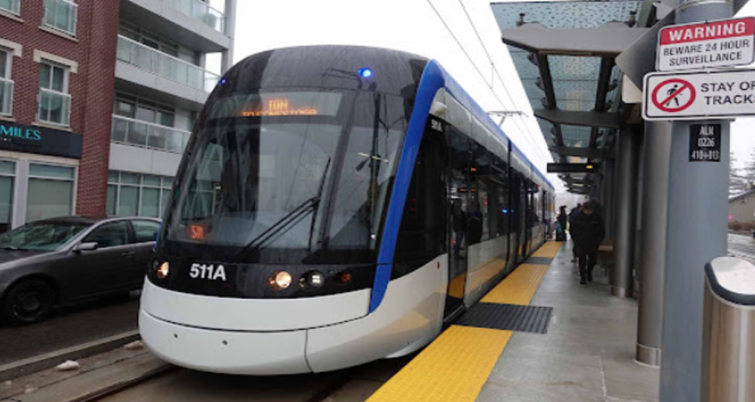Brute strength – Find out how active bridge has been raised for Metrolinx Finch West LRT Project
Written by David C. Lester, Editor-in-Chief
Transit builds bridges, but transit projects also need bridges. The Finch West LRT project will cross the Humber River Bridge, but it needs to be widened and upgraded to make that happen.
Keep reading to find out how high the bridge is being lifted, all while the important crossing stays open.
A few millimeters might not sound like a lot, but lifting an entire bridge any height is a massive feat.
Especially when that bridge still has thousands of cars crossing it.
We’re looking at the Humber River Bridge at Islington Avenue and Finch Avenue West in Toronto. And since January of this year, crews have been completing important work as part of the Finch West light rail transit (LRT) project.
The Finch West community depends on this bridge, and once this work is done, they’ll have a wider refurbished crossing.

How do you lift an entire bridge?
Using a unique method of construction known as bridge jacking, restoration and reconstruction work on the Humber River Bridge continues to take place right under the wheels of thousands of vehicles that drive over it every day.
Bridge jacking is a process that ensures the structural integrity of a bridge remains unaffected as work is in progress.
In the case of the Humber River Bridge, the key architectural components of its concrete girders are lifted incrementally, as teams refurbish each one.
Teams have lifted the bridge using 18 hydraulic jacks controlled by hydro pressure and electricity from nearby control panels.
These powerful jacks move at the same time and speed to safely lift hundreds of tons of concrete, steel, and moving vehicles simultaneously.
In total, 60 girders will be jacked up during the bridge’s refurbishment.
By taking the weight off the bridge’s structure, repairs can be made at an impressive clip.
For the Humber River Bridge, all bearings will be replaced quickly using the bridge jacking technique.
A bridge bearing carries the loads or movement of the bridge in vertical and horizontal directions from the bridge’s superstructure and transfers those loads to the bridge’s pier and abutments.

While the bridge is jacked up, these bearings are replaced with new rubber pads with metal for reinforced strength and endurance.
How high is the bridge lifted to complete this work?
Tommy Medeiros, superintendent, construction, civil and utilities, says experts are lifting the bridge just six millimeters.
“That is what most people don’t know and can’t even see. When people hear that a bridge is being raised, they usually think it’s much higher, but this is more like trying to slide a piece of paper under a laptop,” Medeiros explains.
His team is using a type of jack known as a pedestal jack.
The pedestals are mounted on the face of the abutments and then they jack the bridge up on girders. The team began the process in mid-January, with completion scheduled for the end of March.
A challenge the team faced throughout this process was getting access to the spaces where it was necessary to install heavy machinery, as they are working over a waterway and deep slopes.
Heavy equipment had to be carried down embankments carefully and the team had to ensure the ground could support the load of this large machinery.

Once the team had all the machinery in place, two large control units were set up, which control the 18 jacks.
Medeiros says there is an incredible amount of planning involved in this process.
“Each section lift requires one-to-two weeks of planning,” he says.
“The execution does not take all that long to perform, but planning for every conceivable contingency, including ensuring team and public safety, takes a lot of preparation.”
This planning includes ensuring all environmental procedures are in place, as working over a waterway presents many challenges. Mosaic, the constructor for the Finch West LRT project, secured clearance for working over a navigable waterway through the Navigable Waters Act from the federal government.
Erosion and sedimentary control mitigation measures are also installed to prevent sediment from entering the Humber River.
The bridge’s entire underside features secured scaffolding that is fully floored, which doubles as extra security for teams working on the scaffolding, as well as a mechanism to catch any debris.
All of this work is expected to take three months to finish. That means
All of this work is expected to take three months to finish. That means by the end of March, jacking work will be done, with work continuing on other aspects of the bridge until September.
Want to know more about the project? Just go here.
Stay up-to-date on the Finch West LRT here on Metrolinx News, and follow the project on Twitter.
Metrolinx Note: The story was updated on Mar. 25 to clarify the timeline for the bridge construction





